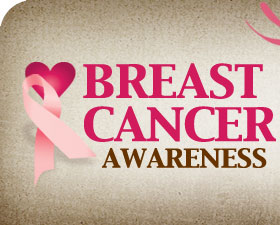Exploring the different types of breast cancer
Breast cancer is a universal term to describe several different cancers that form in and around the breasts. Breast cancer types are generally categorized based on where the illness begins, most often in the ducts or lobules, the parts of the female anatomy responsible for producing breast milk.About 226,870 new cases of invasive breast cancer in American women will be diagnosed in 2012, while more than 22,000 Canadian women will be diagnosed with breast cancer over that same time period.
The National Breast Cancer Foundation lists seven different types of breast cancer. Here's a look at them.
* Ductal carcinoma in-situ (DCIS): This is an early form of breast cancer that refers to the presence of abnormal cells inside a milk duct in the breast. This type of cancer is generally found during mammograms and is considered non-invasive. This means it hasn't spread yet. This makes treatment for DCIS easier than for other forms of breast cancer.
* Infiltrating ductal carcinoma (IDC): Also known as invasive ductal carcinoma, this is the most common type of breast cancer. According to BreastCancer.org, roughly 80 percent of all breast cancer cases are IDC. This cancer starts in the ducts, but "infiltrating" means that it spreads to the surrounding breast tissue. Over time, IDC can spread to the lymph nodes and possibly to other areas of the body.
* Medullary carcinoma: This is a less common form of breast cancer. It is a type of IDC, but it gets its name from the color of the tumors, which are close to the color of brain tissue, or medulla. Medullary carcinoma is quite visible during mammograms because the cancer cells are large and form a barrier between healthy tissue and tumors.
* Infiltrating lobular carcinoma (ILC): The American Cancer Society says that 1 in 10 women will be diagnosed with ILC, which originates in the milk-producing glands of the breast. In ILC, abnormal cells inside the lobule begin to divide and break through the wall of the lobule to invade the surrounding connecting tissues.
* Tubular carcinoma: This is a common cancer for women ages 50 and older. When viewed under the microscope, tubular carcinoma cells have a distinctive tubular structure. There is a 95 percent survival rate for tubular carcinoma.
* Mucinous carcinoma (Colloid): This is a rare condition in which the breast cancer cells within the breast produce mucus. The mucus and the cancer cells join together to form a jelly-like tumor. The tumors may feel like bumpy water balloons, but some are too small to detect with the fingers.
* Inflammatory breast cancer (IBC): This is a rare and very aggressive type of breast cancer that causes the lymph vessels in the skin around the breast to become blocked. The cancer gets its name from the appearance of a swollen, red and inflamed breast.
Women are advised to get a baseline mammogram in their mid-30s and then annual mammograms starting at age 40. Early detection is generally vital for any form of cancer and is especially so for breast cancer.




